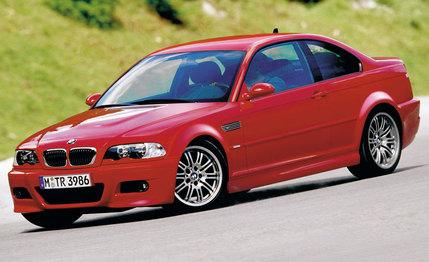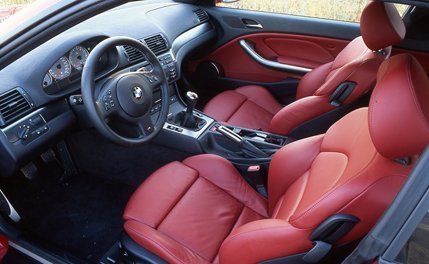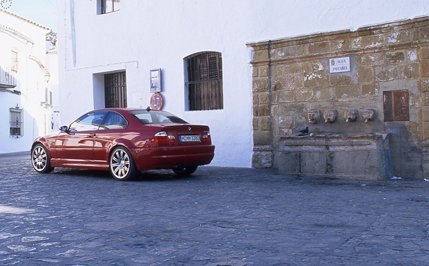 First Drive Review
First Drive Review

In the past 25 years, America has had only two Olympic gold-medal decathletes, Bruce ("Don't call me B.J.!") Jenner and Dan O'Brien. Most people consider the winner of the Olympic decathlon to be the world's best athlete, because it involves competing in 10 widely differing events, from pole vaulting to running to jumping. When Jenner won in '76, America fell in love with him, and he appeared in commercials, made appearances in bad sitcoms, and smiled at us from Wheaties boxes.

In a similar way, BMW's M3—the motorsports version of the 3-series—has been universally coveted since 1994 when the second-generation M3 appeared with a smooth, broad-shouldered 240-hp in-line six. Like a decathlete, the M3 did it all: It could carry four adults and their luggage in comfort, and in the process the car could whip through turns with an agility and crispness usually reserved for hard-core sports cars. Until recently, the M3 was undefeated in our comparison tests—the five-year-old M3 did place second (C/D, September 1999) to the brand-new Audi S4 Quattro. The M3 earned a spot on our annual 10Best list five years in a row -- 1995 through '99. In 1997, it defeated eight cars, including the Acura NSX-T and Ferrari F355, to win our best-handling-car shootout.
Still, we were frustrated to know that BMW sold a better, more powerful M3 elsewhere in the world. BMW said this supreme M3, with 77 more horsepower, was too pricey for the U.S. market.
Perhaps BMW had a point, since the M3 sold here accounted for more than half of all M3s produced from 1995 through 1999. In one particularly good year, 1998, four of five M3s sold were the 240-hp U.S. version priced at roughly $40,000. The more powerful M3 cost about $55,000 in Germany.

For the new M3, based on the current 3-series two-door, BMW decided on two things: (1) Americans were probably willing to spend a little more for the other engine, and (2) making all M3s with the same engine would probably lower the cost enough to make everyone happy. We recently drove the new car in Jerez, Spain, and even got a chance to turn some laps at the Jerez circuit.
The engine is an absolute gem. This ferocious, screaming motor hurtles the M3 down the road with an urgency that now rivals the world's best sports cars from Porsche and Chevrolet. BMW estimates the M3 will hit 60 mph in just 4.8 seconds and will eat up a quarter-mile in 13.5 seconds—on a par with the 911 Carrera and Corvette -- and we think those numbers are accurate.
More than the engine distinguishes the M3 from the 3-series cars. For one, the M3 rides on its own unique suspension. The basic design and layout are shared with the 323 and 330, but nearly every component -- including the hubs and spindles -- was changed, modified, or strengthened for crisper handling and more driver feedback. The front track was increased 1.5 inches and the rear by 1.8 inches to accommodate big 225/45ZR-18 front tires and 255/40ZR-18 rears. In addition, a 0.1-inch-thick aluminum stiffening plate is bolted to the bottom of the front frame rails, and the steering rack uses a turning ratio that is seven percent quicker than the base car's.

The new M3 retains its knife-edged turn-in and flat cornering attitude, but it has picked up a couple of bad habits. The first is a ride that's more punishing than the last model's, which managed to feel both firm and compliant. It isn't uncomfortable, but we sense that the new car bounds around more than the previous model. Second, the new car keeps the rear end so well planted that only the front tires slide in the turns. Yep, it understeers -- badly. Considering how much we loved the old car's neutral handling -- you could call up under- or oversteer at will -- the realization of this trait almost brought tears to our eyes, but the fact remains that without some major driver heroics, the M3's rear end stays emphatically put. Our test car was a European model with 19-inch tires that will not be available stateside, so perhaps the U.S. model with 18-inch tires will feel different. Understeer is a safe, if unexciting handling trait, and the new car masks its speed as well as the old.